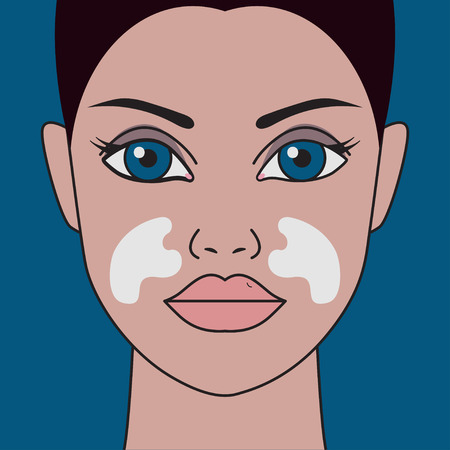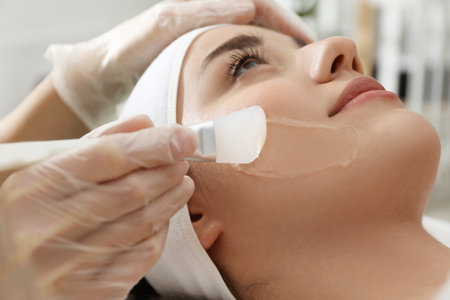1. Understanding Non-Surgical Facelifts with Fillers
When you start noticing fine lines, wrinkles, or a loss of volume in your face, you might wonder if there’s an effective way to refresh your appearance without going under the knife. That’s where non-surgical facelifts using fillers come into play. These treatments have become increasingly popular across the United States for people seeking natural-looking results with minimal downtime.
Unlike traditional surgical facelifts that involve incisions and significant recovery time, non-surgical facelifts use injectable dermal fillers to smooth wrinkles, restore lost volume, and enhance facial contours. Most fillers are made from hyaluronic acid or other substances naturally found in the body, making them a safe and versatile option for rejuvenation.
What Does a Non-Surgical Facelift Involve?
A non-surgical facelift typically involves injecting fillers into key areas of the face—such as the cheeks, jawline, under-eyes, and nasolabial folds—to lift and plump the skin. The procedure is usually done in-office by a board-certified provider and takes less than an hour. You can return to your normal activities almost immediately, which is a huge plus for busy Americans.
Main Differences Between Surgical and Non-Surgical Facelifts
| Feature | Surgical Facelift | Non-Surgical Facelift (Fillers) |
|---|---|---|
| Procedure Type | Invasive surgery with incisions | Minimally invasive injections |
| Downtime | Weeks of recovery | Minimal downtime (often same day) |
| Results Duration | Years (often 5-10 years) | 6 months to 2 years (depending on filler type) |
| Anesthesia Required? | Yes (general or local anesthesia) | No (topical numbing cream may be used) |
| Risks & Side Effects | Higher risk due to surgery (scarring, infection) | Mild swelling or bruising at injection site |
| Candidacy | Best for advanced aging signs | Great for mild to moderate volume loss and lines |
| Cost Range* | $8,000–$15,000+ | $600–$2,500 per session (varies by area & product) |
*Costs can vary based on location and provider experience.
Why Fillers Are Popular in the U.S.
Americans love options that fit into their active lifestyles. With no surgery required and results that look subtle yet noticeable, non-surgical facelifts with fillers provide a customizable solution for anyone wanting to address early signs of aging or simply freshen up their look—without putting life on hold. If you’re curious about whether this approach could be right for you, understanding how these treatments work is the first step.
2. Signs it May Be Time to Consider Fillers
If you’re wondering when a non-surgical facelift with fillers might be right for you, it helps to look out for some common signs of aging that many people notice as the years go by. Fillers can be a great way to refresh your appearance without the downtime or commitment of surgery. Here are some key changes to look for:
Common Age-Related Changes That Indicate Fillers Could Help
| Sign | What It Looks Like | How Fillers Can Help |
|---|---|---|
| Volume Loss | Cheeks look flatter, face appears less full, under-eye hollows become more noticeable | Restores plumpness and creates a youthful contour |
| Mild Sagging | Jawline isn’t as defined, early jowls appear, skin looks looser around cheeks and mouth | Lifts and supports sagging areas for a firmer look |
| Fine Lines & Wrinkles | Crow’s feet, smile lines (nasolabial folds), marionette lines around the mouth become deeper | Smooths wrinkles and softens lines for a refreshed appearance |
| Tired-Looking Eyes | Dark circles or hollows under the eyes make you look more tired than you feel | Adds volume to under-eye area, making you look more awake and vibrant |
| Lip Changes | Lips lose fullness, fine lines form around lips (“smoker’s lines”) | Enhances lip shape and restores lost volume without looking overdone |
How to Know If You’re Ready for Fillers?
You don’t need to wait until signs of aging are very advanced. In fact, many people in their late 20s, 30s, or 40s start with subtle filler treatments as a proactive way to keep their skin looking fresh. If you notice any of these changes—like your cheeks seem flatter than they used to, or makeup settles into new lines—it might be time to explore your options.
Who Are Good Candidates?
- You want natural-looking results without surgery.
- Your skin still has some elasticity (not too loose).
- You have realistic expectations about subtle improvements.
- You’re interested in little-to-no downtime.
Tip:
The best way to know for sure is to consult with a board-certified provider who specializes in facial aesthetics. They can assess your individual needs and help you decide if fillers are right for your goals.

3. Benefits and Limitations of Non-Surgical Options
Why Choose Fillers for a Non-Surgical Facelift?
Non-surgical facelifts using dermal fillers have become increasingly popular in the U.S. because they offer a convenient way to refresh your appearance without going under the knife. If you’re starting to notice early signs of aging—like mild sagging, fine lines, or a loss of volume—fillers can help restore a youthful look while keeping things subtle and natural.
Key Benefits of Filler-Based Facelifts
| Advantage | Description |
|---|---|
| Minimal Downtime | You can usually return to your daily routine right after treatment. Most people experience only slight swelling or bruising that fades quickly. |
| Natural-Looking Results | Fillers are designed to enhance your features gently, so you still look like yourself—just more refreshed. |
| No Surgery Required | No incisions or general anesthesia needed, making it a safer choice for many people who want to avoid surgery. |
| Customizable Treatment | Your provider can target specific areas—like cheeks, jawline, or under-eye hollows—to address your unique concerns. |
| Quick Procedure Time | Treatments often take less than an hour, which is why many call it a “lunchtime lift.” |
Realistic Expectations & Potential Limitations
While non-surgical facelifts with fillers offer many perks, it’s important to know what they can—and can’t—do:
- Temporary Results: Most fillers last between 6 months and 2 years, depending on the product used and your body’s metabolism. Maintenance treatments are needed to keep up the results.
- Best for Mild to Moderate Aging: Fillers work well for early signs of aging but may not be enough for significant sagging or deep wrinkles.
- Possible Side Effects: While generally safe, some people may experience swelling, bruising, or minor discomfort at the injection site.
- Certain Areas May Be Limited: Not all facial concerns can be addressed with fillers alone. Severe skin laxity might require surgical intervention for optimal results.
- Provider Skill Matters: For natural-looking results, choosing an experienced injector familiar with American beauty standards is key.
Is a Non-Surgical Facelift Right for You?
If you value convenience and subtle improvements without surgery, and if your aesthetic goals align with what fillers can realistically achieve, this could be an excellent option. Always consult with a qualified provider to discuss your expectations and create a personalized plan tailored to your needs.
4. Who Makes a Good Candidate?
If youre thinking about a non-surgical facelift with fillers, you might wonder if its right for you. Understanding who makes an ideal candidate can help you decide if this treatment fits your needs and lifestyle.
Age Range
Non-surgical facelifts with fillers are popular among adults of various ages, but certain age groups tend to benefit the most. Here’s a general guide:
| Age Group | Why Its Suitable |
|---|---|
| Late 20s to Early 30s | Great for early prevention and subtle enhancement; helps address first signs of aging. |
| Mid-30s to 50s | Ideal for restoring lost volume, smoothing lines, and enhancing contours without surgery. |
| 50s and Beyond | Can offer noticeable improvement, especially if surgery isn’t an option or desired. |
Skin Health
The best candidates have generally healthy skin. This means:
- No active skin infections or severe acne in the treatment area
- Good skin elasticity (your skin bounces back when pinched)
- Not too much loose or sagging skin—fillers work best when there is mild to moderate laxity
Lifestyle Considerations
Your daily habits and preferences also play a role. You might be a good candidate if you:
- Prefer quick treatments with little to no downtime (great for busy schedules)
- Avoid surgical procedures or anesthesia
- Are willing to maintain results with regular touch-ups (typically every 6–18 months)
- Have realistic expectations about what fillers can achieve—they enhance but don’t replace surgery for more dramatic changes
Who Should Not Get Fillers?
- People with severe allergies to filler ingredients
- Pregnant or breastfeeding women (as a precaution)
- Anyone with untreated skin conditions in the target area
The Bottom Line on Candidacy
If you’re in good overall health, have mild to moderate signs of aging, and want natural-looking results without surgery, you’re likely a strong candidate for a non-surgical facelift with fillers. A consultation with an experienced provider will help confirm the best approach for your unique features and goals.
5. What to Expect During and After Treatment
What Happens at Your Appointment?
If you’re thinking about a non-surgical facelift with fillers, your first appointment will usually start with a consultation. Your provider will talk with you about your goals, take a close look at your facial features, and explain which types of dermal fillers might work best for you. This is also your chance to ask questions and share any concerns.
Typical Appointment Flow
| Step | What to Expect |
|---|---|
| Consultation | Discuss your goals, medical history, and treatment plan with your provider. |
| Cleansing | Your skin will be cleaned thoroughly to reduce infection risk. |
| Numbing | A topical numbing cream or local anesthetic may be applied for comfort. |
| Injection | The provider injects fillers into specific areas based on your needs. |
| Review | You’ll look in the mirror to see immediate results and discuss any adjustments. |
| Aftercare Instructions | You’ll receive tips on caring for your skin post-treatment. |
Recovery Expectations: The American Experience
Most people love that there’s little to no downtime after a non-surgical facelift in the U.S.—you can often return to work or daily activities right away. It’s normal to have some mild swelling, redness, or bruising where the injections were given. These side effects usually fade within a few days. Many Americans choose this option because it fits their busy lifestyles without much interruption.
Recovery Timeline Overview
| Time Frame | What You Might Notice |
|---|---|
| Immediately After | Mild swelling, redness, or minor bruising at injection sites. |
| 24–48 Hours Later | Most swelling and redness begin to subside; makeup can usually be applied if needed. |
| 1 Week Later | Your results become more visible as everything settles in. |
| 2 Weeks Later | You’re likely seeing the final look; contact your provider if anything feels off. |
Tips for Maintaining Your Results (American Beauty Norms)
To keep that fresh, youthful appearance Americans often seek, follow these easy tips:
- Avoid heavy exercise and alcohol for 24 hours: This helps reduce swelling and bruising.
- No rubbing or massaging treated areas: Let the filler settle naturally for best results.
- Sunscreen is key: Sun protection prevents premature aging and protects your investment.
- Keepskin hydrated: Drink plenty of water and use a gentle moisturizer daily.
- Follow up regularly: Most Americans schedule maintenance appointments every 6–12 months to keep their results looking natural and refreshed.
- Communicate with your provider: Always reach out if you have questions or notice anything unusual after treatment.


